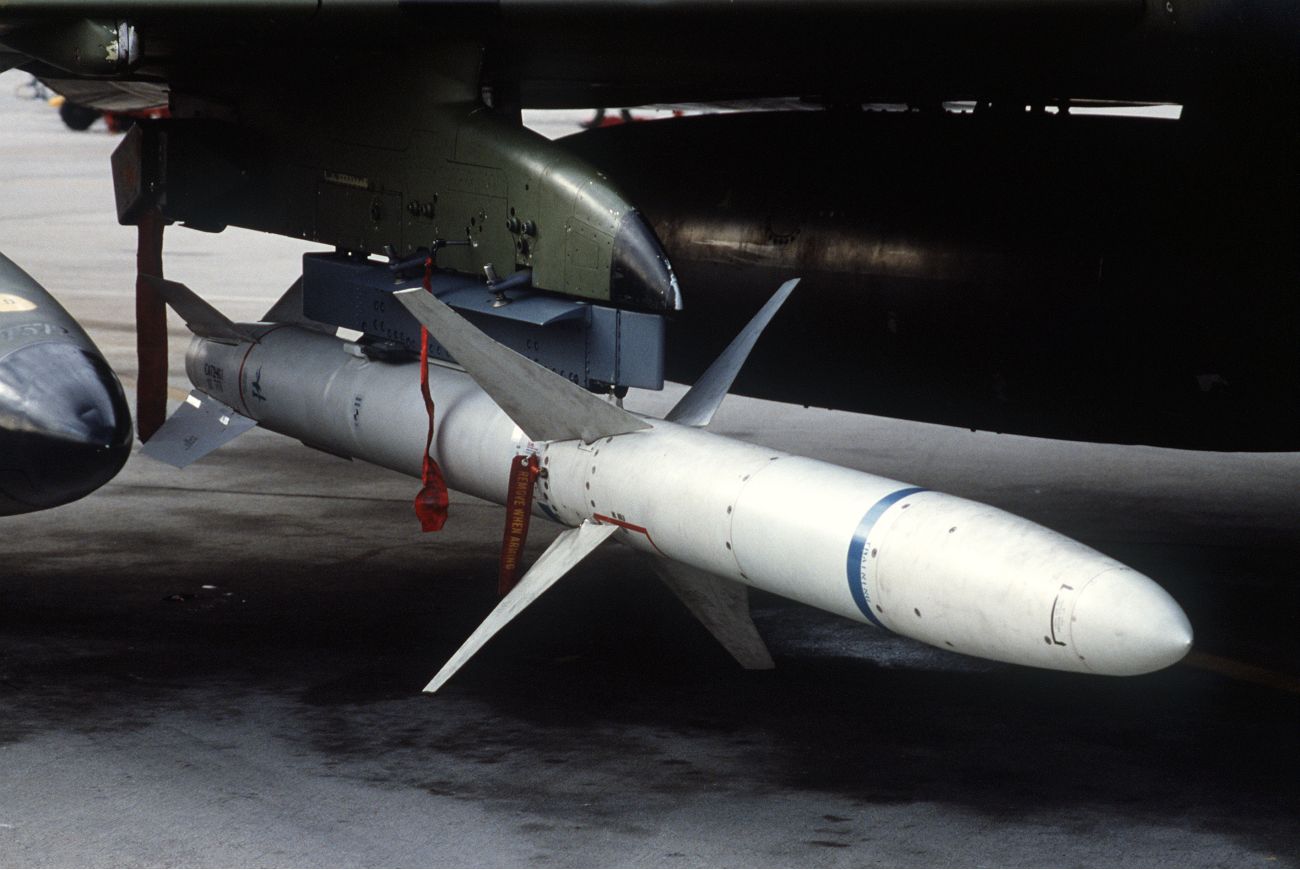The US Navy is looking to acquire dozens of new high-speed aerial targets converted from AGM-88 High-Speed Anti-Radiation Missiles, better known as HARM, which have been in the limelight for their use against Russian targets by Ukraine.
The converted missile, AQM-88A, will assist in filling the void created by the retirement of the AQM-37 target drone, the last two of which were fired at the beginning of this year.
It will also enable the US Navy to meet its requirements for fast-moving aerial targets to support a range of research and development and training missions. The service is apparently planning to acquire nearly 50 AQM-88A, also called the Supersonic Air-Launched Target (SALT), over the next three years.
The AGM-88 High-Speed Anti-Radiation Missiles, or HARMs, is a family of weapons that have recently captured the public’s attention owing to their deployment in Ukraine. In August, the US Defense Department revealed that it had supplied anti-radiation missiles to Ukraine.

The announcement was made days after images circulated on the social media network Telegram showing parts of an exploded AGM-88 missile reportedly deployed by Ukraine against Russian positions.
Following that, a Ukrainian MiG-29 Fulcrum was first observed shooting the AGM-88 missiles on August 30 in a video made available by the Ukrainian Air Force.
Originally, NATO warplanes were designed to carry HARMs. However, Ukraine adapted its MiG-29 jets to carry and fire HARMs with assistance from the US.
However, neither Washington nor Kyiv has precisely described the missile’s effectiveness in Ukraine. Vijainder K Thakur, a retired Jaguar pilot, in his article for the EurAsian Times, pointed out that the AGM-88 HARMs haven’t been particularly effective based on the consistency with which RuMoD claims to be shooting the missile down.
In the past, Ukrainian forces have also employed these missiles in the Kherson region, and pictures have surfaced showing the AGM-88 missile’s wreckage inside a residence.
Reports at the time suggested that the missile may have either malfunctioned or, judging by the possible shrapnel holes in the rocket’s wreckage, it may even have been intercepted.

The AGM-88 High-Speed Anti-Radiation Missiles
Don Blottenberger, PMA-208 program manager, told the Defense Daily that GQM-163A Supersonic Sea Skimming Target and the AQM-88A Supersonic Air-Launched Target (SALT) could not replicate the AQM-37’s performance; they can perform a separate limited subset of its capabilities.
Besides AQM-88A, the GQM-163A, also known as Supersonic Sea Skimming Targets (SSST), will also replace the AQM-37 in several capacities.
The GQM-163A is a ground-launched missile initially designed to imitate sea-skimming anti-ship cruise missiles. However, as technology advanced, the GQM-163A’s capabilities also did, and it now has a “high-dive” mode that can imitate some ballistic missiles.
Meanwhile, the US Navy hasn’t provided any photographs of the new AQM-88A missile. It is assumed that the SALT design and the AGM-88B, the HARM family’s second main member, are physically identical to the earlier versions.
The origins of the original AGM-88A missile can be traced back to the late 1960s. The missile’s development began in response to a desire for a more effective anti-radiation missile to replace the AGM-45 Shrike and AGM-78 Standard Anti-Radiation Missile (ARM).
The AGM-88A was designed to be substantially faster than the AGM-45 and AGM-78. This reduced the time enemy radar technicians had to shut down their equipment, which had earlier shown to be a very successful method of avoiding Standard ARM.

Since the 1980s, American forces and others have used different HARM iterations in different conflicts. As previously mentioned, the Ukrainian forces also integrated their Soviet-era MiG-29 Fulcrum fighter jets with older versions of the missiles.
Due to technical challenges, the AGM-88A was not put into service with the Navy until 1985. The following year saw the launch of a Block II subvariant with an enhanced reprogrammable seeker.
The AGM-88B came next in 1987, featuring an even better seeker later modified with fresh software to provide a Block III subvariant. Since then, other HARM variations with enhanced capabilities have been developed and deployed.
Many new models were developed from the earlier models, including AGM-88Bs. It is worth noting that the AGM-88E Advanced Anti-Radiation Guided Missile (AARGM) is the latest and most advanced missile model.
Nevertheless, the newly converted missile, AQM-88A, might provide the versatility to counter various aerial threats, such as specific air-to-air or air-to-surface missile types. AGM-88B conversion might be less expensive than purchasing newly designed aerial targets with similar capabilities.
- Contact the author at ashishmichel@gmail.com
- Follow EurAsian Times on Google News




